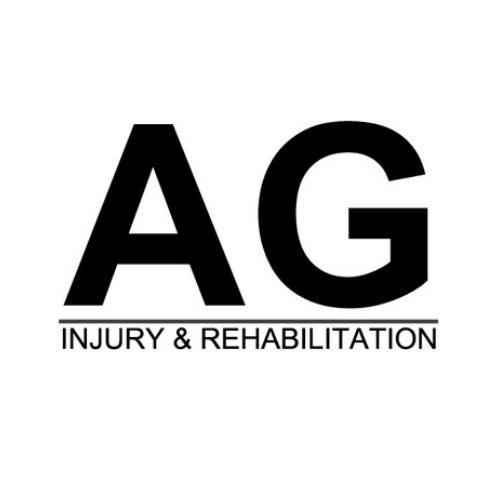Imagine being able to twist your body into pretzel-like shapes or touch your thumb to your forearm with ease. For people with hypermobility, these seemingly impossible feats are everyday realities. However, this extraordinary flexibility often comes with a complex set of challenges that extend far beyond party tricks.
While some view hypermobility as a superpower that enables exceptional athletic performance or artistic expression, the reality is more nuanced. This condition, affecting up to 20% of the population, presents a unique balance of advantages and potential complications that impact daily life in ways many never consider.
Definition of Hypermobility
Joint hypermobility disorders and conditions occurs when joints can move beyond their typical range of motion. This condition affects the body's connective tissues, allowing for greater flexibility but potentially leading to joint instability and pain.
Hypermobility spectrum disorders (HSD) represent a group of conditions that cause joint hypermobility along with related symptoms. These disorders range from asymptomatic cases where people have flexible joints without problems to more complex situations involving chronic pain and frequent injuries.
Medical professionals often use the Beighton score to assess joint flexibility and diagnose hypermobility. This scoring system checks specific joints, including elbows, knees, fingers, thumbs, and the ability to bend forward with straight legs. Common signs include joints that regularly dislocate, frequent sprains, and ongoing joint pain.
Causes of Hypermobility
Genetics play a central role in joint hypermobility conditions. People inherit variations in genes that affect how their body produces and processes collagen and other proteins that make up connective tissue proteins. These genetic differences can make joints more flexible than usual.
One specific genetic condition linked to hypermobility is hypermobile Ehlers-Danlos syndrome (hEDS). This inherited disorder affects the body's connective tissues, making joints particularly flexible and prone to movement beyond normal ranges.
Scientists have found that people with hypermobility often have differences in their collagen structure. Collagen acts like glue that holds joints, ligaments, and other tissues together. When collagen doesn't form properly, it can lead to loose joints and stretchy skin, two common signs of hypermobility conditions.
Types of Hypermobility
Generalized joint hypermobility affects multiple joints throughout the body. People with this condition often show increased flexibility in their elbows, wrists, fingers, and knees. Some might view this extra flexibility as an advantage, particularly in activities like gymnastics or dance.
Hypermobility spectrum disorders fall along a range of severity. At one end, people have flexible joints without other symptoms. At the other end, individuals experience regular joint problems, including pain and instability. The symptoms can affect daily activities and movement.
Common areas affected by joint hypermobility include the knees, hips, ankles, and shoulders. These joints might move beyond their normal limits during regular activities, making them more likely to become injured. The degree of flexibility varies among individuals, with some experiencing mild symptoms while others face more significant challenges.
Common Symptoms of Hypermobility
People with joint hypermobility syndrome often experience joint pain, particularly after physical activity. This discomfort can range from mild aches to intense pain that interferes with daily tasks. The pain typically affects multiple joints, including knees, hips, and shoulders.
Muscle fatigue is another frequent symptom, as the body works harder to maintain joint stability. Many individuals report feeling tired more quickly during regular activities. Joint instability can lead to frequent subluxations or complete dislocations, especially in fingers, shoulders, and kneecaps.
Beyond joint issues, people with hypermobility may experience gastrointestinal problems and autonomic nervous system dysfunction. These symptoms can include digestive issues, rapid heart rate, and dizziness. The combination of physical symptoms often affects sleep patterns and energy levels, making everyday activities more challenging.
Challenges Faced by Individuals with Hypermobility
Living with hypermobility creates daily hurdles for many people. Joint instability makes simple tasks like writing, typing, or carrying groceries difficult and sometimes painful. Many individuals report frequent injuries from regular activities, as their joints move beyond safe ranges.
The chronic pain associated with hypermobility affects sleep, work, and social activities. People often need to modify their movements and limit certain physical activities to prevent injury. This can lead to reduced participation in sports, exercise, or hobbies they once enjoyed.
Many people with hypermobility face emotional challenges too. The unpredictable nature of symptoms can cause anxiety about potential injuries or pain flares. Some individuals feel frustrated when others don't understand their condition, as hypermobility isn't always visible to others. The combination of physical limitations and social pressures can affect mental well-being and self-confidence.
Diagnosis Methods for Hypermobility
Healthcare providers use the Beighton scoring system as a standard tool to measure joint flexibility. This test checks nine specific points on the body, including the ability to bend thumbs backward, extend little fingers, and place palms flat on the floor with straight legs. A score of 4 or higher out of 9 points suggests hypermobility.
Medical professionals also look at a patient's history of joint problems, including past dislocations, sprains, and chronic pain. During physical examinations, doctors check joint stability, range of motion, and signs of previous injuries. They often ask about family history since hypermobility conditions often run in families.
The Brighton criteria add to the Beighton score by considering other symptoms like skin changes, arthritis, and recurring joint dislocations. Doctors may order imaging tests to rule out other conditions that could cause joint problems, such as arthritis or connective tissue disorders.
Management Strategies for Hypermobility
Managing hypermobility requires a team-based approach combining several treatment methods. Physical therapy and exercise stands at the forefront of treatment, focusing on strengthening muscles around loose joints to improve stability and reduce injury risk.
Healthcare teams often include physical therapists, pain specialists, and occupational therapists who work together to create personalized treatment plans. These plans typically combine exercises, joint protection techniques, and pain management strategies.
Key components of management include specific exercises to build muscle strength, techniques to improve balance and coordination, and methods to protect joints during daily activities. Many people benefit from wearing braces or supports during physical activities, while others find relief through hot and cold therapy for pain control.
Physical Therapy and Exercise Recommendations
Physical therapy plays a key role in helping people with joint hypermobility syndrome build strength and stay active safely. Therapists teach specific exercises that target muscles around flexible joints, creating better support and stability.
The most effective exercises include low-impact strength training using resistance bands and body weight. These movements focus on building core strength, improving balance, and making joints more stable. Many people benefit from activities like swimming and stationary cycling, which put less stress on loose joints.
When exercising, it's essential to stay within a safe range of motion and avoid pushing joints too far. Physical therapists recommend starting slowly and gradually increasing intensity. They often suggest wearing joint supports during workouts and stopping any movement that causes pain or discomfort.
Pain Management Techniques
People with hypermobility often benefit from multiple approaches to control joint pain. Heat therapy helps relax tight muscles, while cold packs reduce swelling after activity. Many find relief through gentle stretching and relaxation methods like deep breathing or meditation.
Over-the-counter pain medications can help manage discomfort when needed. Options include acetaminophen for general pain relief and anti-inflammatory drugs for joint swelling. Some people require prescription medications for severe pain episodes.
Physical methods and approaches like taping joints and wearing compression garments provide support during daily activities. Cognitive behavioral therapy teaches pain coping strategies and stress management techniques. Many people find that pacing their activities throughout the day prevents pain flares and reduces overall discomfort.
Lifestyle Modifications for Hypermobility
Small changes in daily routines make a big difference for people with flexible joints. Setting up workspaces with proper support helps reduce strain - this includes using chairs with good back support and keeping computer screens at eye level. Many find that standing desks allow them to change positions throughout the day.
Good posture habits protect joints from extra stress. This means sitting with feet flat on the floor, keeping shoulders back, and avoiding positions that overextend joints. When lifting objects, people should bend at the knees rather than the waist and hold items close to their body.
Many people with hypermobility spectrum disorder benefit from eating foods rich in vitamin C and protein, which support connective tissue health. Staying hydrated helps maintain joint function, while getting enough sleep gives tissues time to repair. Using pillows for support during sleep and taking regular movement breaks during long periods of sitting or standing helps manage daily symptoms.
Mental Health Aspects of Living with Hypermobility
The physical challenges of hypermobility often affect mental well-being. Many people experience higher rates of anxiety and depression linked to ongoing joint pain and physical limitations. The constant worry about potential injuries or joint dislocations can create added stress in daily life.
Physical symptoms like chronic pain and fatigue make it harder to handle everyday stress. This often leads to a cycle where physical discomfort increases anxiety, which then makes pain feel worse. Some people feel isolated when others don't understand their condition, adding to emotional strain.
Mental health professionals help people develop coping tools for living with hypermobility. These include relaxation methods, mindfulness practices, and stress reduction techniques. Support groups connect people with others who share similar experiences, reducing feelings of isolation and providing practical advice for managing both physical and emotional symptoms.
When to Seek Medical Attention
Joint pain that lasts more than a few days needs medical evaluation. Watch for signs like recurring joint dislocations, frequent sprains, or joints that feel loose and unstable during regular activities. These symptoms might point to an underlying hypermobility condition that requires treatment.
Getting checked early helps prevent long-term joint damage. See a doctor if you notice increased clumsiness, regular muscle strains, or ongoing fatigue that affects daily tasks. Pain that disrupts sleep patterns also calls for medical attention.
Without proper care, people with hypermobility face higher risks of arthritis, chronic pain conditions, and repeated injuries. Pay attention to symptoms beyond joint issues too - like digestive problems, easy bruising, or skin that tears easily. These signs might connect to broader connective tissue disorders that need specific medical management.
Support Resources for Individuals with Hypermobility
What is HSD offers helpful materials and connects people with medical experts who understand joint hypermobility. Local support groups bring together individuals who share similar experiences, creating spaces for sharing tips and coping strategies.
Online forums and social media communities let people with hypermobility talk about daily challenges and trade advice about managing symptoms. These groups often share information about helpful products, exercises, and ways to make everyday tasks easier.
Many hospitals and clinics run education programs teaching people how to protect their joints and handle pain. Physical therapists and occupational therapists provide training on proper movement techniques and home exercises. Some medical centers offer specialized clinics focused on treating hypermobility conditions, bringing together different healthcare professionals to provide complete care.
Living with Hypermobility: The Road Ahead
Managing hypermobility is a journey that requires patience, dedication, and a comprehensive approach to both physical and mental well-being. While the condition presents unique challenges, advances in medical understanding and treatment options continue to improve outcomes for those affected. With proper support and management strategies, many people with hypermobility lead active, fulfilling lives.
The key lies in building a strong support network and developing personalized strategies that work for each individual. By combining medical guidance, physical therapy, lifestyle modifications, and mental health support, people with hypermobility can effectively navigate their condition while maintaining quality of life.

